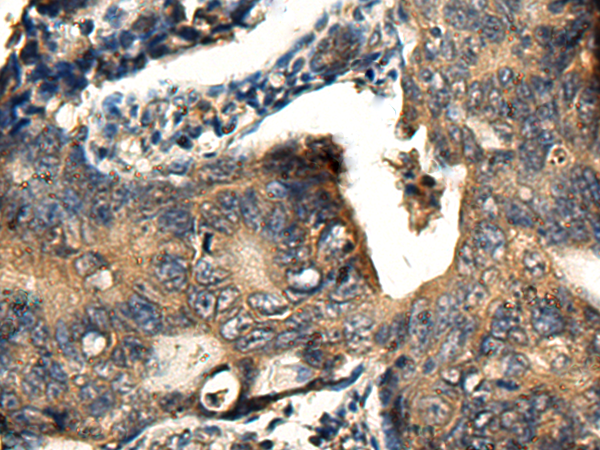
| WB | 咨询技术 | Human,Mouse,Rat |
| IF | 咨询技术 | Human,Mouse,Rat |
| IHC | 1/150-1/300 | Human,Mouse,Rat |
| ICC | 技术咨询 | Human,Mouse,Rat |
| FCM | 咨询技术 | Human,Mouse,Rat |
| Elisa | 1/5000-1/10000 | Human,Mouse,Rat |
| Aliases | BCS; BJS; PTD; BCS1; FLNMS; h-BCS; MC3DN1; h-BCS1; GRACILE; Hs.6719 |
| Host/Isotype | Rabbit IgG |
| Antibody Type | Primary antibody |
| Storage | Store at 4°C short term. Aliquot and store at -20°C long term. Avoid freeze/thaw cycles. |
| Species Reactivity | Human, Mouse |
| Immunogen | Fusion protein of human BCS1L |
| Formulation | Purified antibody in PBS with 0.05% sodium azide and 50% glycerol. |
+ +
以下是关于BCS1L抗体的3篇参考文献,按文献名称、作者及摘要内容概括整理:
1. **文献名称**: *BCS1L mutations cause mitochondrial complex III deficiency via impaired assembly of the Rieske FeS protein*
**作者**: Fernández-Vizarra, E., et al. (2007)
**摘要**: 研究通过免疫印迹和免疫荧光技术,利用BCS1L特异性抗体验证患者细胞中线粒体复合体III的组装缺陷,揭示BCS1L突变导致Rieske FeS蛋白功能异常。
2. **文献名称**: *GRACILE syndrome, a lethal metabolic disorder with iron overload, is caused by a point mutation in BCS1L*
**作者**: Visapää, I., et al. (2002)
**摘要**: 通过构建BCS1L突变细胞模型,结合BCS1L抗体进行蛋白质表达分析,发现该基因突变导致线粒体功能障碍,与GRACILE综合征的病理机制相关。
3. **文献名称**: *Mutation in mitochondrial complex I assembly factor NDUFAF3 and BCS1L causes distinct neonatal-onset mitochondrial disorders*
**作者**: Baertling, F., et al. (2014)
**摘要**: 研究利用BCS1L抗体进行免疫沉淀和蛋白表达检测,对比不同线粒体组装因子突变患者的表型差异,阐明BCS1L缺陷特异性影响复合体III的稳定性。
以上文献均通过BCS1L抗体验证其在疾病模型或线粒体功能研究中的蛋白表达及定位,为相关疾病机制提供了实验依据。如需具体DOI或期刊信息,可进一步补充关键词检索。
The BCS1L antibody targets the BCS1L (BCS1 Homolog, Ubiquinol-Cyanide Reductase Complex Chaperone) protein, a critical mitochondrial chaperone involved in assembling respiratory chain Complex III (ubiquinol-cytochrome c reductase). BCS1L facilitates the insertion of the Rieske iron-sulfur subunit into Complex III, essential for electron transport and oxidative phosphorylation. Mutations in the BCS1L gene are linked to severe mitochondrial disorders, including GRACILE syndrome (growth retardation, aminoaciduria, cholestasis, iron overload, lactic acidosis, and early death) and Björnstad syndrome (characterized by sensorineural hearing loss and pili torti).
BCS1L antibodies are widely used in research to study mitochondrial dysfunction, protein expression patterns, and disease mechanisms. They are applied in techniques like Western blotting, immunofluorescence, and immunohistochemistry to visualize BCS1L localization in tissues or cultured cells. These antibodies also aid in diagnosing genetic disorders by detecting abnormal protein levels or mutations in clinical samples. Recent studies explore BCS1L's role beyond mitochondrial respiration, including its potential involvement in cellular stress responses and cancer metabolism. Commercial BCS1L antibodies are typically raised in rabbits or mice, with validation across species like human, mouse, and rat, supporting cross-disciplinary research in biochemistry, genetics, and translational medicine.
×